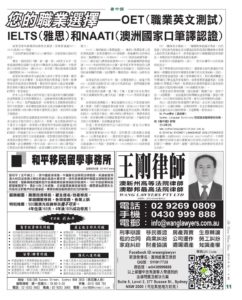Advices for Interpreter-to-be
- Don’t take something you aren’t skill and qualified to do
- Open your document early and go through all of it. Remember all the information sent to you by the customer is all important.
- Make a list of all speaker name in order to avoid pronounce incorrectly
- Dress professionally and avoid bright colour
- Arrive earlier and try to talk to the speakers;
- Keep good eye contact with the audience
- Pay attention to your volume and speak pace
- Note taking in extremely important to capture all main idea
- Give a friendly reminder for the speaker before the session start that you may interrupt them if they speak for too long.
- Be updated with all current affairs and the international news
Tips on Translation from Vietnamese into English
1. Vietnamese grammar
Vietnamese grammar revision training is essential as it will help the student gain better insight of different structures in the Vietnamese language. Students can become more confident when choosing a suitable structure when translating Vitnamese into English.
2. Different ways to practise translation
Studies suggested that instead of being given a 200-word text, teachers should give 10 sentences of the same syntactic structure in Vietnamese. By doing this, a student can certainly master the way of handling subjects in a given structure. This is a particularly effective way for a limited competency English learner.
3. The lack of knowledge of both Vietnamese and English.
If students cannot master the characteristics of Vietnamese and understand the difference between the two languages, they will end up producing sentence forms that are very unnatural and awkward.
4. Tense and Aspect in Vietnamese
The tenses and aspects in Vietnamese and English are expressed differently. This can be understood easily from the example below:
Lan ăn cơm
“Lan” can be translated into English as “is eating rice”, “ate rice”, “eats rice” or “has eaten”, depending on the context.
5. The markers đã and đang do not accurately specify past and present tenses.
Đã in sentences (a) and (b) does not indicate actions happening in the past. As we can see, Đã in (a) expresses a truth in the present, and in (b) it expresses an action happening in the future.
(a) Bây giờ tôi đã có nhà.
I have enough houses now
(b) Nếu ba tháng nữa em mới về thì anh đã đi Mỹ rồi
If you go back in three more months, I’ve been to America already
6. Adverb of time
In (a) “Tuần trước” (last week) in Vietnamese is the adverb of time implying the past. No tense marker is needed in this sentence but the verb “go to work” has to be changed into “went to work” in English. “Sẽ” in sentence (b) is used to state uncertainty of an event; it is appropriate to talk about the future. However, “sẽ” is not a tense marker but an aspect marker. Therefore “sẽ” can indicate a future time frame but not in all cases.
(a) Tuần trước Hoa đi làm.
Last week Hoa went to work
(b) Hoa sẽ nở
A Flower will blossom
7. Verb “to be”
In English, the verb to be has many forms: am, is, are, was, were, be, being, and been. There is only one word for verb to be- là. Therefore, when translating from Vietnamese to English, a student should be very careful with the subject in order to decide the appropriate verb form.
(a) Tôi là học sinh
I am a student
(b) Anh ấy là người yêu của tôi
He is my lover
8. Phrasal Structures in Vietnamese
There is a difference between Vietnamese and English adjective phrases. The general rule is the adverb of manner precedes the adjective. For example:
rất đẹp
very beautiful‟
hơi đẹp
bit beautiful
9. Some students know the translation rule very well; however, they don’t have sufficient practice of all kinds of linguistic structures and patterns. As a result they may make grammar mistakes when translate into English.
10. Topic-Comment structure of Vietnamese
As Vietnamese speakers like to mention a topic first and then elaborate on that topic later, it is common that the majority of students admit the complexity of the Topic-Comment structure of Vietnamese. Students have a tendency to be more correct in translating Vietnamese sentences whose subjects are apparently recognizable through a clear semantic.
11. The identification of dropped subjects from Vietnamese into English
Vietnamese people in general have the habit of speaking without a subject whenever it can be inferred from the context. Many students are incapable of locating the subject and often translate incorrectly. Therefore, it is a great burden for students to translate a subject in English with an obligatory constituent in order for people to understand thoroughly.
12. Passive voice
Vietnamese people prefer the active voice to the passive voice. Therefore, students should not translate two languages word by word but understand the whole idea and start to translate.
13. The omission of pronouns in Vietnamese:
Students should be aware that the subject in Vietnamese spoken language is often omitted but not in English. Consequently, they must analyse the source text to find the missing subjects, direct objects or indirect objects in order to avoid mistranslation
14. “Double subject” constructions of Vietnamese:
This means the topic is not identical to the subject. The relationship between the topic and the subject can be possessive or inclusive. The strategy is to recognize the link between the subject and the topic.




Latest Comments